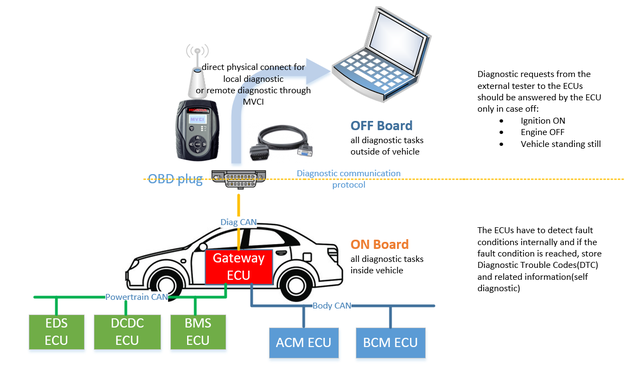
Uds Protocol Introduction (unified Diagnostic Services)
Published 8/2025
MP4 | Video: h264, 1280x720 | Audio: AAC, 44.1 KHz, 2 Ch
Language: English | Duration: 2h 20m | Size: 930 MB
Master the basics of UDS protocol for vehicle diagnostics and ECU communication in automotive embedded systems.
What you'll learn
Understand the Fundamentals of UDS (Unified Diagnostic Services)
Identify and Interpret Diagnostic Service IDs (SIDs)
Understand UDS Communication Flow
Differentiate Between Functional and Physical Addressing
Explore UDS Diagnostic Sessions and Security Access
Learn About Negative Response Codes (NRCs)
Understand Transport Protocols Used with UDS
Get Introduced to Real-World UDS Tools and Applications
Requirements
Basic understanding of automotive systems
Introductory knowledge of communication protocols
Some exposure to embedded systems or software development
No prior UDS knowledge needed
Optional: Access to diagnostic tools (CANoe, CANalyzer, UDS simulator)
Description
Course DescriptionModern vehicles are increasingly dependent on electronic control units (ECUs) to manage essential functions like engine control, braking, infotainment, and more. As vehicle complexity grows, so does the need for reliable diagnostic systems to monitor, maintain, and update these ECUs. One of the most widely used diagnostic protocols in the automotive industry today is UDS - Unified Diagnostic Services, defined under ISO 14229.This course is designed to give you a comprehensive introduction to UDS - its purpose, architecture, and real-world usage in automotive embedded systems. Whether you're a student, a fresher, or an experienced engineer looking to transition into automotive diagnostics, this course will provide you with the knowledge and confidence to understand UDS communication effectively.You'll start by exploring the fundamentals of UDS - why it is used, how it fits into the vehicle communication system, and what makes it essential for modern automotive development. Then, you'll dive into Service IDs (SIDs), which are the core operations supported by UDS, such as

iagnostic Session Control (0x10)ECU Reset (0x11)Read Data by Identifier (0x22)Write Data by Identifier (0x2E)Security Access (0x27)Routine Control (0x31)Each of these services will be explained with clear examples and message structures, helping you understand how a tester (diagnostic tool) and an ECU interact.The course also introduces you to important concepts such as

iagnostic session types (default, extended, programming)Positive and Negative ResponsesNegative Response Codes (NRCs) and how to interpret themFunctional vs. physical addressingSecurity mechanisms in UDS (seed-key process)In addition, you'll gain an overview of the underlying communication protocol - ISO-TP (ISO 15765-2) - which enables UDS messages to be sent over the CAN network. You'll learn how multi-frame communication works and how UDS handles larger data packets.To bridge theory with practice, we also introduce the role of tools like CANoe, CANalyzer, and UDS simulators, which are commonly used in professional environments to send and analyze UDS messages.By the end of the course, you'll be able to:Understand and explain UDS protocol structure and servicesRead and interpret UDS request/response messagesApply UDS concepts in automotive development or testing projectsWhether you're aiming for a role in ECU diagnostics, embedded development, or vehicle testing, this course equips you with essential skills to thrive in the automotive software domain.
Who this course is for
Electronics, Electrical, and Computer Science engineering students
Embedded software and firmware developers
Test engineers and validation professionals
Automotive system engineers
Freshers and job seekers
Anyone curious about how diagnostics, fault detection, and ECU communication are handled in modern vehicles